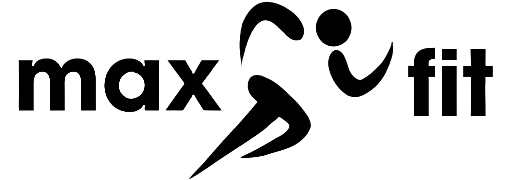Exercise remains one of the most powerful tools for improving health, preventing chronic diseases, and enhancing quality of life. Whether your goal is weight loss, building strength, improving cardiovascular fitness, or even boosting cognitive function, the length of your workouts plays a critical role. While many recommendations exist for total weekly exercise volume, translating these into the length of an individual workout session requires a closer look at exercise intensity, rest intervals, and your personal fitness level.
Established Guidelines for Workout Duration
Aerobic Exercise
For general health and cardiovascular benefits, major public health organizations agree that adults should engage in moderate-intensity aerobic exercise for a minimum of 150 minutes per week. This often translates to 30 minutes of activity on most days of the week. Alternatively, 75 minutes of vigorous-intensity exercise can be substituted to achieve similar benefits. These guidelines are designed to reduce the risk of heart disease, diabetes, and other chronic conditions while improving overall stamina and mood. For instance, the American College of Sports Medicine (ACSM) and the Centers for Disease Control and Prevention both promote these volumes of activity as a baseline for healthy living
Strength Training
Strength training is recommended at least twice per week and should target all major muscle groups. Workouts for resistance training generally involve performing multiple exercises—each with 8 to 12 repetitions for most healthy adults—with sufficient rest between sets to allow muscle recovery. For many individuals, a well-structured strength session lasts between 30 and 60 minutes
healthline.com. Even brief sessions can yield benefits, especially when progressive overload is incorporated to continually challenge the muscles.
High-Intensity Interval Training (HIIT)
An emerging area of research suggests that high-intensity interval training (HIIT) may be especially effective when time is at a premium. HIIT involves short bursts of maximal or near-maximal effort interspersed with brief recovery periods. Studies have shown that these workouts can improve cardiovascular fitness and metabolic health in significantly less time than traditional steady-state exercise. Many HIIT sessions can be completed in under 30 minutes while still providing substantial benefits
Factors That Influence Workout Duration
Exercise Goals
Your personal goals largely dictate the amount of time you need to spend exercising. For example, if your primary objective is to maintain general health, you may achieve excellent benefits with 30-minute sessions spread throughout the week. However, if you aim to build muscle mass or significantly improve athletic performance, you might need longer sessions to accumulate the necessary training volume.
Key goal areas include:
- Cardiovascular Health: Steady, moderate sessions of 30 minutes or more help improve heart function, lower blood pressure, and enhance endurance.
- Strength and Hypertrophy: To build muscle, most research supports sessions of 45 to 60 minutes that include multiple sets of exercises with adequate rest between sets.
- Metabolic and Cognitive Benefits: Short, intense workouts (such as 20- to 30-minute HIIT sessions) can improve insulin sensitivity, boost metabolism, and even enhance brain function.
Intensity and Rest Periods
The intensity at which you exercise is inversely related to the duration you might need. Moderate-intensity workouts are effective when performed for longer durations, while high-intensity workouts may yield similar benefits in a shorter time frame. For instance, a 30-minute brisk walk may improve cardiovascular markers, whereas a 20-minute HIIT session could offer equivalent or even superior improvements in aerobic capacity and metabolic health.
Rest intervals—both between sets during a resistance session and between intense bouts in HIIT—are critical. Longer rest periods of 2 to 3 minutes between heavy sets can help maintain performance and volume, especially as fatigue builds. Conversely, incorporating shorter bursts with brief recovery (for example, 10- to 30-second efforts with similar rest periods) can enhance oxygen consumption and overall workout efficiency
Training Status and Personal Factors
Beginners may experience significant benefits from even very short sessions. In many cases, untrained individuals can see improvements in strength and cardiovascular health with workouts lasting as little as 15 minutes per session. On the other hand, experienced athletes or individuals with higher performance goals typically need to increase the overall training volume, which may extend individual session durations.
Age, recovery ability, and overall time availability also play essential roles. Older adults, for example, may require longer recovery periods and benefit from shorter, less frequent sessions to avoid overtraining and injury
Scientific Evidence and Research Findings
Recent research has provided further insight into how workout duration relates to performance and health outcomes:
- Cardiovascular Improvements: Multiple studies indicate that accumulating 150 to 300 minutes of moderate aerobic exercise weekly is linked to reduced risk of cardiovascular disease. Research also shows that vigorous-intensity sessions lasting around 20 to 30 minutes may be sufficient for enhancing VO₂ max, a key indicator of aerobic fitness mayoclinic.org.
- Strength and Muscle Gain: Research studies suggest that resistance training sessions lasting 45 to 60 minutes are optimal for muscle hypertrophy and strength gains. This duration typically allows for 2 to 4 sets per exercise with proper rest intervals, ensuring enough volume to stimulate growth while minimizing the risk of fatigue-induced performance drop-offs menshealth.com.
- HIIT Efficacy: Several studies have found that high-intensity interval training can provide similar improvements in cardiovascular fitness and metabolic function compared to traditional moderate-intensity continuous training, despite a significantly lower total workout time. For example, a study found that just 20 minutes of high-intensity exercise can yield notable increases in aerobic capacity and fat oxidation rates eatingwell.com.
Structuring Your Workout for Maximum Benefit
Designing an effective workout session involves balancing warm-up, main exercise, and cool-down phases to ensure both safety and effectiveness.
Warm-Up
A warm-up period of 5 to 10 minutes prepares your cardiovascular system and muscles for the main workout. This phase can include dynamic stretching and low-intensity movements that gradually increase your heart rate.
Main Workout
For aerobic sessions, the main workout should aim for a steady state or incorporate intervals depending on your goals. For strength training, the main workout is structured around a series of exercises that target all major muscle groups. A typical strength session might involve:
- 4 to 6 compound exercises (such as squats, deadlifts, bench presses, and rows)
- 1 to 3 sets per exercise with 8 to 12 repetitions
- Rest periods of 60 to 180 seconds between sets
Key Guidelines (for illustration):
- For cardiovascular fitness: Aim for 30 minutes of moderate-intensity exercise five times per week or 20 minutes of vigorous-intensity exercise if time is limited.
- For strength gains: Schedule resistance training at least two times per week with sessions lasting 45 to 60 minutes.
Cool-Down
A cool-down period of 5 to 10 minutes is essential to gradually lower your heart rate and stretch your muscles, which may help reduce post-workout stiffness and facilitate recovery.
Practical Considerations for Different Populations
Beginners
If you are new to exercise, start with shorter sessions—around 15 to 20 minutes—and gradually increase your workout duration as your fitness improves. Focus on low-to-moderate intensity activities and allow adequate recovery between sessions. Even short bouts of physical activity accumulated throughout the day can lead to significant health improvements.
Advanced Athletes
For those who are well-trained, the focus shifts to accumulating higher volumes of work and progressively overloading the muscles. Advanced lifters and endurance athletes might benefit from extending their sessions to 60 minutes or more and incorporating a mix of strength training, high-intensity intervals, and steady-state cardio to continue making gains.
Older Adults and Special Populations
Older individuals or those with chronic conditions should tailor their workout duration and intensity based on their capabilities and recovery rates. Low-impact activities and flexibility training are critical to minimize injury risk. Often, shorter sessions spread throughout the week are more sustainable and safer for these groups.
Balancing Frequency and Duration
The total weekly exercise volume can be achieved through different distributions. Some people may prefer three longer sessions per week, while others find that five shorter sessions better fit their schedule. The key is consistency; whether you opt for fewer long sessions or more frequent short sessions, meeting the overall weekly volume is what yields the greatest benefit
Future Directions and Final Thoughts
Emerging research continues to refine our understanding of the minimum effective dose of exercise for various health outcomes. Studies suggest that even brief bouts of activity, such as a 10-minute HIIT session, can be transformative when performed consistently. Meanwhile, traditional guidelines remain a solid foundation for most people, with 30 to 60-minute sessions proving effective for general health, cardiovascular fitness, and strength improvements.
Ultimately, the ideal workout length is highly individual. Consider your goals, listen to your body, and adjust your workout duration based on factors such as intensity, recovery, and overall lifestyle. By designing a routine that fits into your daily schedule and meets your health objectives, you are more likely to stick with it and see lasting benefits.
Remember that any exercise is better than none. Whether you choose 20 minutes or 60 minutes per session, consistency and gradual progression are the keys to building and maintaining a healthy, active lifestyle.

